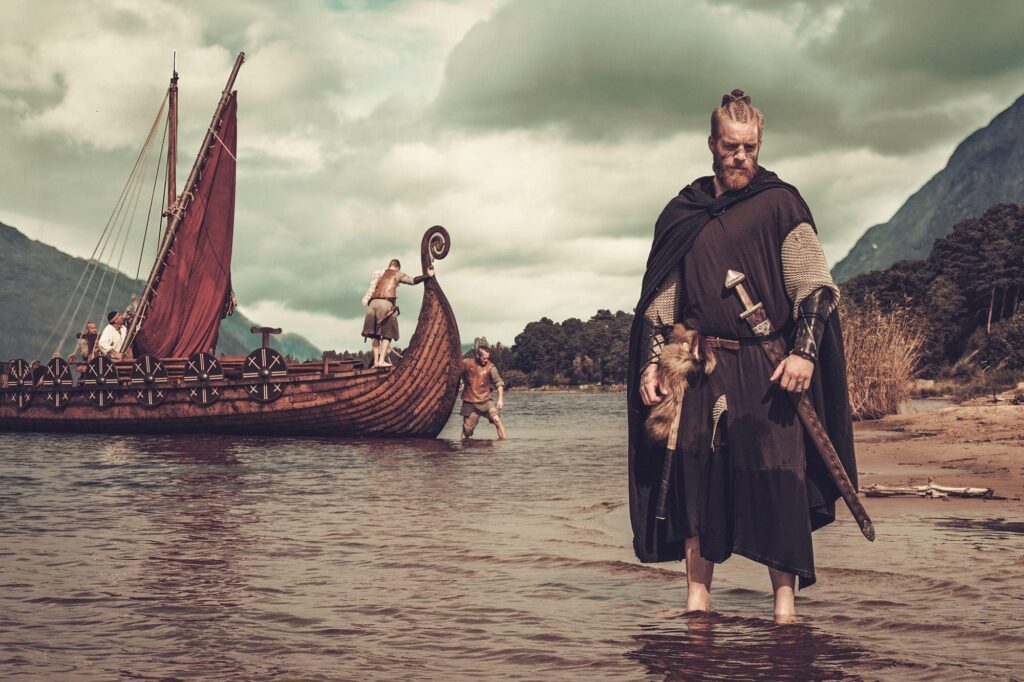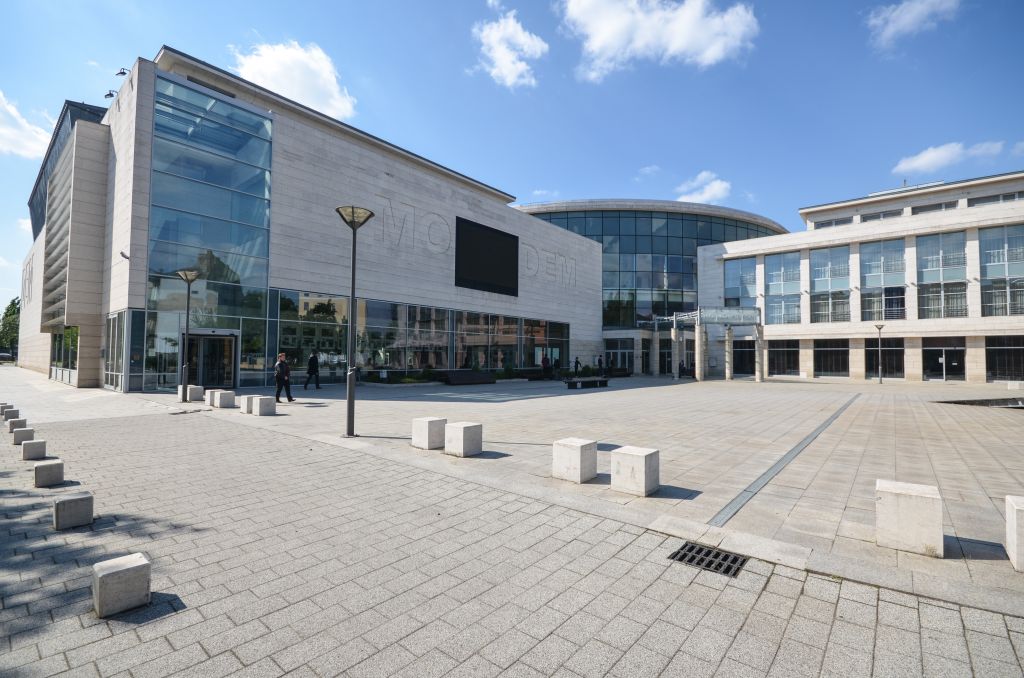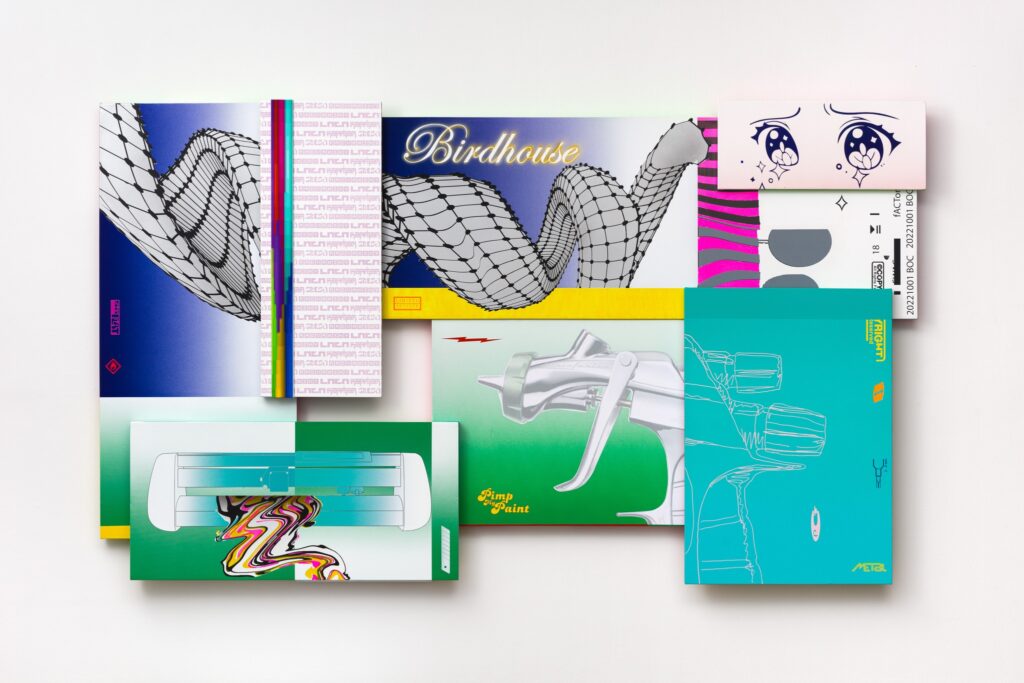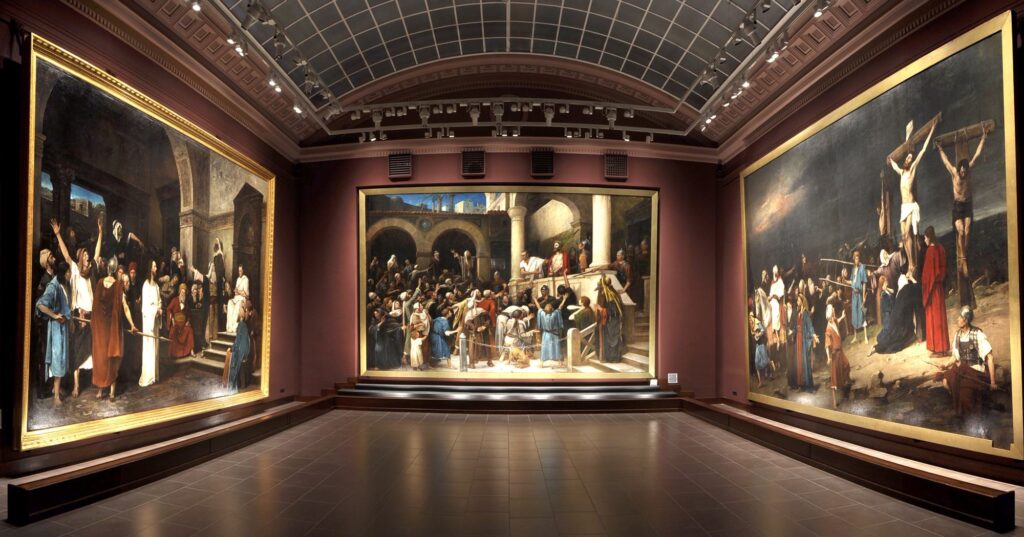January is the longest and most hated month of the year. The holiday season is off, we get back to school and work, and the grey and monotonous workdays are back. Above all, the weather is at its worst – cold, foggy days follow one another in January. If you don’t want to get the January blues, take some simple tips to brighten up your mood. One tip we recommend to you is to go to museums or art galleries you haven’t visited for a long time or at all and explore the power of art that is – scientifically proven – a great way to have a good impact on your mental health.
These are the exhibitions to see now in Debrecen.
For those who like traveling and exploring exotic places
RÉUNION – The Anatomy of an Island
Reunion is hardly known in Hungary. The island is a tiny dot on the map of our planet, only mentioned in a few short lines in academic textbooks. The tiny island rises from the inky blue depths of the Indian Ocean to the east of Madagascar, above the salty foams of the sea, offering a diverse habitat for plants, animals, and people.
The island’s towering dwarf mountains shake off the clouds, which water the fertile soil of this volcanic landmass with heavy rains. Its enchanting landscapes have long been uninhabited by man, where plants and animals of peculiar appearance have proliferated and flourished in abundance in an environment of paradisiacal beauty and completely undisturbed by civilisation.
It was into this ‘unspoilt’ environment that modern geographical exploration brought mankind, who had sought to expand the known world, and left his footprints and his handprints on the island’s long-unspoilt appearance.
Réunion is now an overseas department of France and, therefore, part of the European Union. The island is some 8,000 kilometres from Paris as the crow flies, with a direct ‘inland’ flight linking it to the charming capital of Réunion, Saint-Denis.
Whereas in the colonial era, wealthy officials and more comfortable travellers often carried themselves in carts, today’s travellers can now rely on their own feet for longer journeys. Lemon-coloured buses run between the major towns along the coast (and towards the major mountain towns). The bright yellow Car Jaune and its ‘little brother’, the ti’Car Jaune, nowadays offer a fast, comfortable, and cosy journey for modern-day ‘explorers’.
The curator of the exhibition, Szilveszter Mező, chief museologist at the Natural History and Environmental Studies Department of the Déri Museum, will introduce visitors to this unique world he travelled through.

Location: Déri Múzeum, Zoltai Lajos Terem
Open: May 7, 2023
For those who like the televison series The Vikings and The Game of Thrones
Vikings in the Carptahian Basin
The Vikings and Debrecen?
It was less than two years ago that the city of Debrecen unveiled the statue of King St Stephen on Dósa Nádor Square. The contemporary work depicts the king with a spear in one hand and a sword in the other. Research has long since established that the latter object was a Viking weapon and is rightly considered part of the memory of the former Hungarian king. However, Debrecen hides more treasures than just this public statue, which relates to the early centuries of Hungarian history and the Vikings. And the keeper of these treasures is the museum that bears the name of Frigyes Déri.
It is here that an early Russian helmet, once found in Nemiya, survived world burnings and regime changes and remains one of the rare relics of the skill of medieval Nordic craftsmen. In addition to the helmets, rich sites such as the 10th-11th century cemeteries of Pyspökladány, Sárrétudvar, Hajdúszoboszló and ártánd in Hajdú-Bihar county have also helped to investigate early Hungarian and Scandinavian relations. Without these sites, we would certainly know less about the early Hungarians and their connections across Europe. The Déri Museum, however, not only preserves and guards these magnificent treasures but also offers insights into them to the interested public.
A good example of this is the current exhibition, where many of our country’s outstanding collections (19 lending institutions!) have donated their treasures to be displayed at the Déri Museum alongside the antiquities of our region.
We can see with our own eyes all that others think they have seen through books, immerse ourselves in the beauty of the objects, and wonder what must have been in the minds of those who made, wore, and used these intricate weapons, tools, and jewellery.

Location: Déri Museum
Open: May 7, 2023
For art fanatics
Along The Line
Along the Line is the permanent exhibition of MODEM Modern and Contemporary Art Center’s collection, in Debrecen. The exhibition, which explores the contemporary use of the line in various media, comes into being by the curatorial selection from a deliberate and continuously evolving collection of the past 16 years including purchases of artworks and mainly donations of the International Artist Residency of Debrecen. Drawings, especially studies, had a subordinate role until the beginning of the 20th century. They could only function as sketches, but nowadays they are considered as complete works of art. The use of lines in the photos, paintings and sculptures presented at the exhibition reinterprets the idea of the drawing-line. Here, it already becomes the vehicle of the artistic idea: a tool that uses the mask of simplicity, focus and ease cleverly in understanding and depicting reality.

Location: MODEM Modern and Contemporary Art Center
Open: December 31, 2023
Read more: https://modemart.hu/en/exhibitions/vonal-menten-2
For those who like art experiments
30+
Experimental Art Education Project
Three Decades of Hungarian Art Through the Eyes of Secondary School Students
MODEM’s experimental art education project, launched in 2019, will come to an end this October. As a final chord, the exhibition will be on show from 24th October 2022 to 12th February 2023, presenting the Hungarian contemporary art world of the last 30 years since the fall of communism in a unique way. The exhibition is curated by Tamás Don, József Mélyi, and Ágnes Szabics.
Launched in 2019, the project aimed to introduce Hungarian art of the last three decades to high school students in particular. The curators selected a work of art from each year of the period between 1989 and 2020 by a Hungarian artist, which was then analysed by art historians and theorists, in collaboration with museum educators and secondary school teachers, in a comprehensive way. The works were exhibited by MODEM for a month or two – each exhibition was accompanied by museum education exercises based on the texts.
In the spring of 2020, the project was opened up to high school students, university students, and even adults from other parts of the country, and in December 2020, MODEM won the Ludwig Museum Arttransfer Prize for its online sessions.
The project will conclude with a compendium exhibition in October 2022, the publication of which will include the analyses and exercises for the works.

Location: MODEM Modern and Contemporary Art Center
Open: February 12, 2023
Read more: https://modemart.hu/en/exhibitions/30
For the members of Generation Y who like creating content with their smartphone
New Mediations – International exhibition of Generation Y artists
#modem #Ygeneration #internetaesethics #newmediations
Before visiting an exhibition, we will look at installation photos or artists’ works on our smartphones, continuing and maintaining the continuous cycle of images and their contents. The reproduction of artworks and exhibitions in digital space goes further than they could ever go with their physical presence.
The technological development of the Internet has intensified the mediation of images to an unprecedented level, where we are mediators, consumers, and (re)creators of images and content. In this new process of mediation, we, the viewers, the content sharers, and the creators, become both recipients and producers in a constant circulation of images. This media-historical change has left a decisive mark on our culture, replacing the rigidity of materials with a series of flexible interactions, as a result of which our actions can be understood as new forms of mediation.
The exhibition aims to present the work of significant representatives of a current international art trend, the online and contemporary art community of Generation Y artists from the UK, Germany, Serbia, and Hungary, independent of geographical boundaries. Strongly connected to both the material and virtual universe, Generation Y, or millennials, have literally grown into the world of the internet and social media, which has brought about significant changes in their perception of the world.
As part of the process of new mediation through the internet and social media, reproductions of artworks become content. Media scholar Kate Eichhorn defines content as “sometimes conveying information, telling a story or entertaining, but it doesn’t need to do either to spread effectively”. In her interpretation, content, and therefore the reproduction of artworks, has shifted from material and aesthetic categories of cultural production to a strictly market-oriented approach that often ignores the form, medium, and genre of the artwork.
The rare opportunity to physically encounter these works of art in an exhibition, and to see the form and medium of these objects up close, allows us to break the cycle of content production. Through their artworks, the artists have re-materialised their impressions of the two-dimensional flat screen, transforming them into crafted and well-designed works of art. They work in a variety of genres, using predominantly analogue techniques, while at the same time seeking their reference network in the aesthetics of the Internet, the virtual reality that underpins their everyday existence. Their paintings, objects, and sculptures are meticulously designed and crafted using both digital and hand tools. Many of them reveal the process of creation on the surface of their works, leaving behind subtle, personal traces. Others play with the flaws in their work or create unusual parallels between images.
The artist’s attention to detail results in a strong and heterogeneous visual profile of the works, which at first glance makes it difficult to access their deeper layers. At the same time, however, their works go beyond a direct reference to the Internet itself in their choice of subject matter. Their approach is extremely varied, with Nemes, Dunkelberg, and Freiwald looking back to modernist tendencies in deconstruction and the relationship between negative and positive spaces, while Scheer, Batykó, Beck, and Birds of Cool push the boundaries of painting and object making. Epp and Djodjevic relate to the postmodernist approach, using simple signifiers to tell a story through humorous images. Pearce and Fallon create objects that would not otherwise exist, while Keresztesi creates montages that combine aesthetic elements of the past to convey new meaning. Finally, Holze deals directly with the way in which the culture industry attempts to transform classical artworks into content.
A new international exhibition at the MODEM Centre for Modern and Contemporary Art offers an insight into the diverse, personal exploration of Internet aesthetics through the work of twelve contemporary artists and a group of four artists, creating new images and forms that break out of the rigidity of materials, giving further space to mediations of the real and the virtual.

Location: MODEM Modern and Contemporary Art Center
Open: January 22, 2023
Read more: https://modemart.hu/en/exhibitions/new-mediations
For those who like classical pieces of fine arts
The Munkácsy Trilogy and the Old Gallery
“I wanted to depict God who appeared in human form”
This is how the artist testified about his own works, whose monumental creations that process the history of Christ’s suffering can be seen in perhaps the most popular exhibition room of the museum, the Munkácsy Hall. The paintings display the conflict between Christ and his accusers, and the fulfilment of the word, namely the crucifixion of Christ as a denouement. The peculiarity of the joint presentation of the works is that not even Munkácsy had seen his three paintings together that processed biblical themes. The pieces of the series which capture the life of Jesus were first shown together at the Déri Museum on 25 August 1995.
Those artworks can be seen in the old gallery which were made in the 17th–19th centuries, and most of which got into the museum as gifts from Frigyes Déri.
The displayed works show this period of twists and turns from the Baroque pictorial memories through classicistic artworks to the outstanding period of our national painting and the flourishing of historical painting. The exhibited nearly seventy paintings are arranged in thematic groups. The first demonstrates the 17th–19th century aspirations of portrait painting and the changes that happened during these two hundred years. The second cabinet displays still life, while the third exhibits landscapes and genre paintings side by side to call attention to the close connection between the two themes.
The artworks in the graphic cabinet are the pictorial documents of those memories which are still visible in Debrecen, or which are only preserved in paintings and graphic sheets. The earliest piece, a contemporary aquarelle, depicts the Theatre of Debrecen (built: 1861–1865).
In the last and largest room, the works of the outstanding painters of the 19th century complete the exhibition of the old gallery, the material of which honourably reflects the extraordinary richness of the Déri collection.

Location: Déri Múzeum
Read more:
Munkácsy Hall: https://www.derimuzeum.hu/kiallitasok.php?id=27
Old Gallery: https://www.derimuzeum.hu/kiallitasok.php?id=24
For those who would like to see art curiosities
The Finding of the Corpse of Luis II by Soma Orlai Petrich
The awe-inspiring oil painting entitled The Finding of the Corpse of Luis II painted by Soma Orlai Petrich returns to its original location of exhibition. As part of the bicentenary of the birth of Sándor Petőfi, Hungary’s national poet and liberal revolutionary, the painting returns to and is exhibited at the Historic Grand Library of the Reformed College of Debrecen from January 6, 2023.
The most spectacular place in the College is the Grand Library, which is considered one of the most beautiful libraries in the world. It is the largest church library with nearly 600,000 books in the country. Outstanding among these are the 39 codes, 146 ancient books printed before the 1500s; 1600’s, old Hungarian publications, and many old and rare books in both foreign and Hungarian languages. Its collection of Bibles preserves the books of Scripture in about 250 languages. The oldest piece in the library is a 10th-century codex fragment.

Location: Historic Grand Library of the Reformed College of Debrecen
Open: December 31, 2023